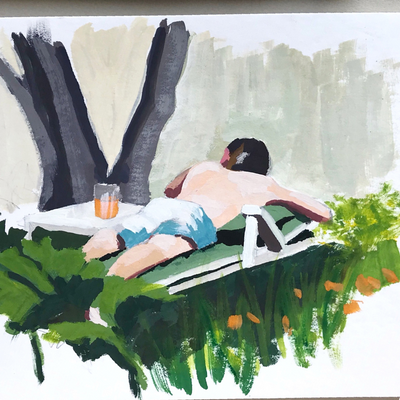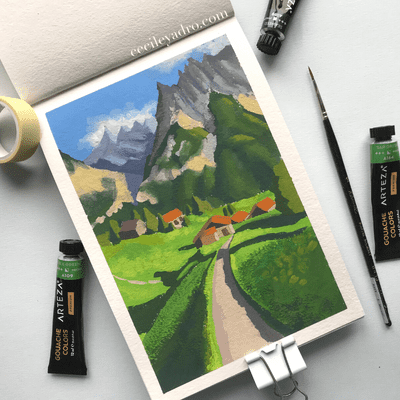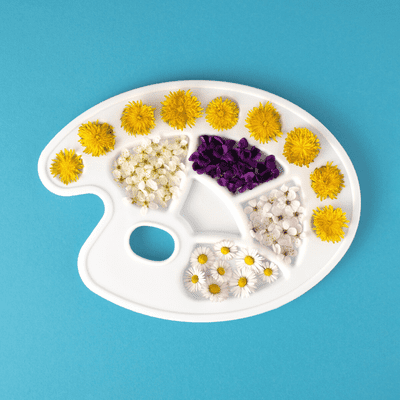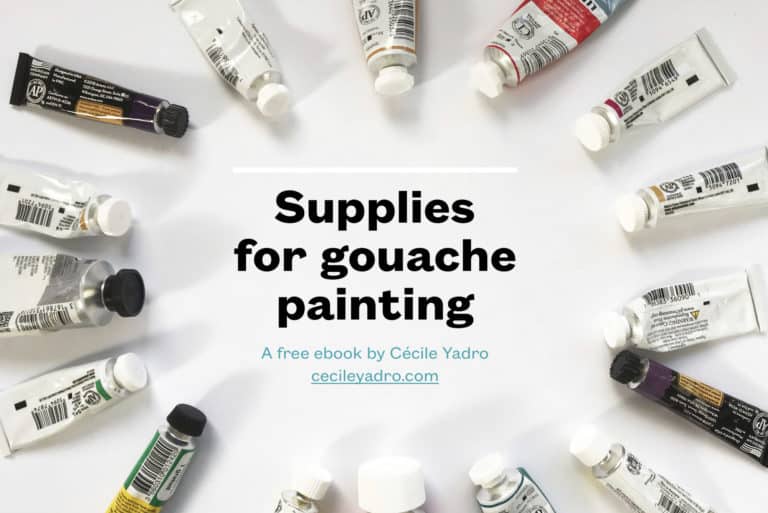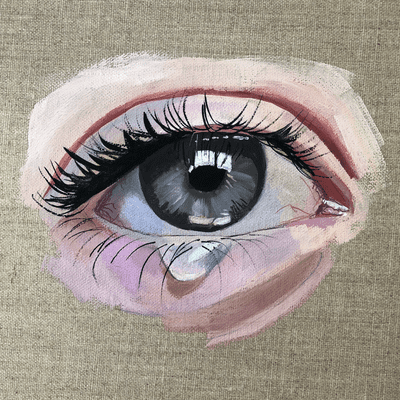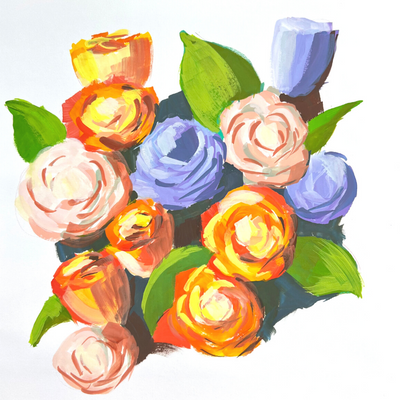Can you use gouache in pans?
You know that gouache is sold in tubes or cups. Maybe you’ve heard about gouache cakes or pans. Can you use gouache in pans? What’s the best way to use gouache? Is it better in a tube or pan form?
Yes, you can use gouache in pans, but you will lose the creamy consistency of gouache, even if pans are more portable than tubes or cups. You must also be careful with the quality of the gouache in pans, and it can be a good idea to make your own pans.
Gouache is a water-based medium.
Gouache is a water-based medium with pigments grounded in powder form and mixed with Arabic gum. These pigments dry when painted onto paper or canvas to produce an opaque finish. You can use gouache in either tube, cup, or pan form.
As gouache is easy to reactivate with water, like watercolor, you can use it in a dry form, but you may lose the main benefit of gouache!
Painters can use it in pan form.
You can purchase gouache in cakes or pans, although this is not today’s most common form. Before the invention of paint tubes, painters used them in their dry state. Today, few suppliers still offer gouache pans, and you have to be careful with the quality.

Usually, cake forms are more for kids at school, which is one reason why gouache is unpopular today. Many people remembered this palette with round wells and had a challenging experience with it.
Why use gouache in pan form?
The main qualities of gouache versus watercolor are opacity and thick consistency. If you use cakes or pans, you will never get the creamy consistency fresh from the tube, but you’ll have a part of the opacity. In gouache paint, pigments are bigger than in watercolor, so the paint is more opaque and has more granulation. Painters can use this to their advantage for fun effects in abstract paintings or landscapes.
The main reason to use cakes is their portability. Gouache tubes are messier than pans, which makes them harder to transport. Panning will also help reduce the mess created by carrying around a tube of paint that can easily be crushed or broken in your backpack. If you like to paint Plein air, it’s an option you should consider. You’ll need a foldable bucket of water, two brushes, and your dry gouache palette.
Why not use watercolor pans instead?
Sometimes people call gouache ‘opaque watercolor.’ I usually disagree with this, but with dry gouache pans, this is what it is: a slightly more opaque watercolor. Rehydrating the dry gouache will never make it as perfectly opaque as the fresh paint, but it will be more opaque than watercolor.
That’s great to use in landscape paintings to cover large areas or to mix white gouache with watercolor to give it more body and opacity. You have to experiment!

You can make your pans.
If you plan to use gouache pans and want to be sure of the quality of the paint, you could make them, and if you already have gouache tubes, it’s pretty easy to do. Use an empty watercolor palette and empty pans made for filling watercolor. If you’re using large brushes for painting, you should use full pans and not half pans; it will be easier to grab the pigments without contaminating the colors.
Fill your pan with the fresh paint, tap on the table with the pan to spread the paint, complete with some more paint and let it air dry. You can arrange your colors as you prefer, in a chromatic wheel or with light and dark colors.
Although some colors are prone to crackle, primarily earth tones, you may get a lot of dry paint crumbles in your palette.
Final thoughts
Many people don’t realize that gouache is available in pan form, which can be helpful for different purposes. If you’re new to painting with gouache or want something more convenient than the traditional tubes, consider trying out pan paint instead! You can learn everything about gouache supplies here.

